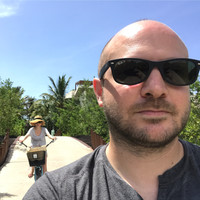
Let An Algorithm Do Your Scheduling
We’ve read the hype about algorithms before. Now we’re reading the hype about artificial intelligence. Much of the real-world work falls under the umbrella of trade secrets, so we have very few examples of either making a difference. A health system in Wisconsin gives us a glimpse into a real-world application with some very positive results.

How Prevea Health Used Algorithms
Prevea Health is a large multispecialty practice with a rural patient population. It has 350 primary care physicians and specialists, 46 health centers, and it runs 26 employer-based clinics.
Many of its patients do not have an established relationship with one provider. Prevea Health was looking for a way to allow patients to schedule appointments 24/7/365. What it wanted was one solution that handled patient-driven appointment scheduling and directed the patient to the right provider. It also wanted the solution to produce enough data to allow redesigning patient and provider flows to eliminate inefficiencies and reduce costs.
Prevea worked with DocASAP to develop a system which allows patients to schedule appointments after querying them about their health needs. DocASAP handles a number of different scenarios.
Prevea found that in one of these, patients were coming to their providers through a Google search. If they click on the link (provided by DocASAP) for the individual provider’s booking, they are taken directly to the scheduling module. If not, they are queried about their health needs. This allows DocASAP’s algorithm to pick a set of providers and locations for them. It takes the patient to that provider’s scheduling page once they have selected one. Depending on the patient’s initial responses and provider preferences, the patient may be asked to provide additional information.
The database that is produced as a result of this scheduling process allows Prevea’s analysts to looks at the patient flows that are generated so they can continuously refine the algorithms to get the patient to the right provider. Once the appointment is booked, the patient gets appointment reminders as well.
Is the algorithm working? Prevea’s no-show rate has been driven down to four percent, which is very low and compares to a national average of 18 percent. Thirty-eight percent of appointments are booked after hours. While other metrics are still under development, it certainly looks like the effort is producing results.
What Can We Learn From The Prevea Experience?
“Information engineering” refers to the process of asking what information is flowing into an organization, who is getting it, what is being done with it, what the results are, and how the process can be improved. In this case, information is flowing into the system.
The patient needs an appointment for problem X – and flowing out – here are the providers best suited to treat him/her. The available appointment times are presented. The results of those two information flows generate data that Prevea can use to fine-tune the process and to provide further services, such as reminders. One of the lessons learned is that patients, when provided with the right information, will usually pick providers who are the appropriate ones to treat their problems.
The fact that a patient does not need to interact with the provider’s office staff is another advantage. Office staff may or may not be qualified to assess things like:
- Whether the reason the patient wants to see the provider is appropriate
- Whether the provider handles that sort of problem
- Who to refer the patient to
The algorithm, in contrast, knows all of this, and provides the right information without bother. If there are problems in the algorithm, they can be detected in the data generated, and the algorithm can be refined. Try doing that with a medical office staff and dozens of physicians.
The one possibly problematic link in the whole setup is the integration with Google. That makes a lot of sense if Prevea knows that a majority of its patients will use the system. But it has to rely on DocASAP to create and place the appropriate links to its scheduling system on its Google page. What about Bing or Facebook? Apparently, they are not integrated with the system the way Google is.
Conclusions
Scheduling is a major time-consuming operation in physicians’ offices. When the patient is in the wrong location, the office staff has very little ability to get them to the right one. Prevea and DocASAP have solved that problem by building the referral process into an algorithm. Judging by the no-show rate, it works. The weak point is its reliance on Google.


